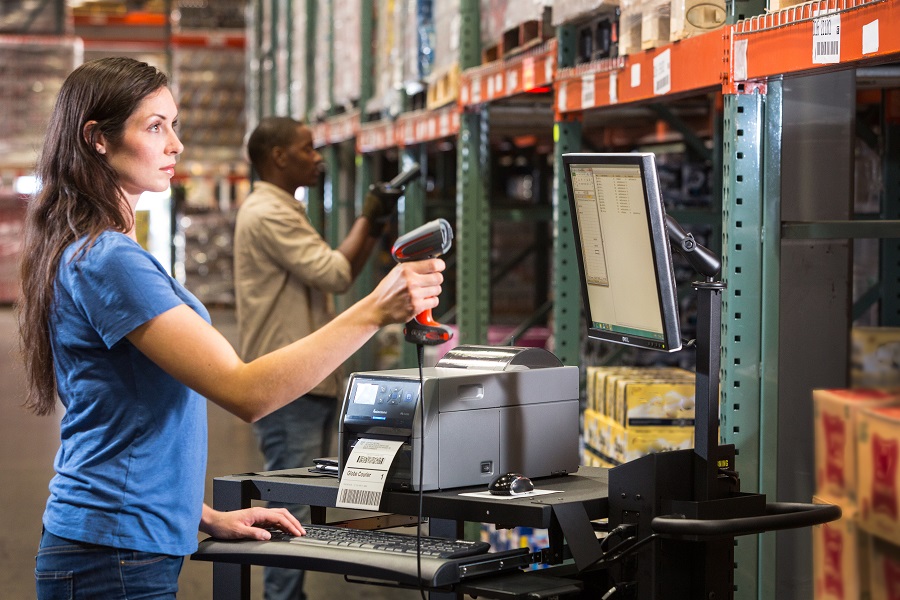Not all barcode scanners are alike. Choosing a barcode scanner for an enterprise application requires examining not only the technology used in the scanner, but also how that technology will serve your application.
Below we’ve outlined four key decision areas for choosing a barcode scanner. While every application is different, these are some of the most important factors to keep in mind before purchasing the hardware.
1D, 2D, or Both?
Your chosen scanner must meet the scanning needs of your application. What type of barcodes do you need to scan? There are generally two classes – 1D or linear barcodes (like the traditional UPC retail code) or 2D codes that can hold significantly larger amounts of data. These include familiar codes like QR Code or Data Matrix.
2D barcodes require an imager-based scanner, while 1D codes can be read with either an imager or a laser scanner. If you are primarily reading UPC or “license-plate” style barcodes, then a laser scanner or linear imager scanner may suffice. If you are already scanning 2D codes, or may need to scan them in the future, then you’ll need an area imager.
Imagers also provide other benefits, including the ability to take photos and scan text. They also tend to be more durable.
You’ll also need to determine how far away from the barcode the scanner will be. Scanners have a finite read range that varies based on the model and the technology. This can range from a few centimeters up to several meters for long-range warehouse scanning. The scanner’s read range and the type and size of barcode mark will need to be considered in concert to make the best selection.
Ruggedness
When choosing a barcode scanner, you also have to take the environment into consideration. Select a scanner that is durable enough to operate reliably in your work environment.
In a warehouse or outdoor environment, you’ll want to use a scanner that has a sufficient drop rating and ingress protection (IP) rating. If the scanners will be exposed to a lot of dirt, moisture, splashing water, or chemicals, you’ll need even more durable hardware. There are also devices designed for specific environments like healthcare (where they must able to withstand sterilization and cleaning) or the oil/gas or chemical industries (where the devices may need to be rated for use in explosive environments).
While rugged scanners are more expensive, they more than make up for the added cost by operating reliably for many years in challenging environments.
Select a Comfortable Form Factor
Ergonomics can be just as important as durability when it comes to choosing a barcode scanner that will make employees more productive.
Barcode scanners come in a variety of form factors. It’s important to choose scanners that your employees will be comfortable using for an entire shift. In retail applications, the scanners should be light enough and designed to help prevent repetitive motion injuries. In the warehouse, workers should be able to comfortably carry the scanners and aim them at the barcodes they need to read without straining themselves.
In-counter or fixed-mount presentation scanners can be used for stationary scanning operations. If the application also requires additional data collection or data entry, then a handheld computer or tablet with a scanner may be the best option.
Can You Take It Where You Need It?
When it comes to handheld scanners, there are both corded and cordless models. Make sure you provide your employees with devices that will allow them the freedom to scan at the point of activity.
In retail environments, if employees will be scanning large items from a variety of angles, then a cordless scanner is the best option from both a productivity and ergonomic perspective. If the scanners are attached to point of sale terminals or computers without wireless support, you’ll need a corded device.
For mobile computers or cordless scanners, make sure the device offers enough battery life to last for an entire shift – otherwise the recharging process can eat into employee productivity.
Choosing a barcode scanner can be a complex process. By thoroughly evaluating your application needs, environment, and ergonomic considerations, you can quickly narrow down your choices and purchase the right hardware for your enterprise.




